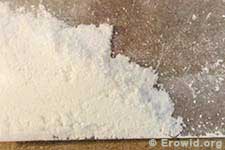Notice that for years, no terrorist has been captured on the battlefield, they have simply been killed per the edict of the Obama administration. It has made intelligence collection and cultivation almost impossible and in some cases under the previous administration has led to the deaths of innocent civilians due to collateral damage or bad ground control.
The most recent capture was in 2014 of Abu Khattalah of Benghazi, the only terrorist detained and he is presently being held in the Washington DC area.
Meanwhile: The case of United States v. Ibrahim Ahmed Mahmoud al Qosi proceedings at Fort Belvoir, Va., scheduled for July 12. He was released by Obama from Gitmo to his home country Sudan and made his way to Yemen working for AQAP.
The charge sheet for Ahmed Abu Khattalah is here.
The Trump administration appears to be making its first moves toward fulfilling a campaign promise to fill the Guantanamo Bay prison camp with “bad dudes.”
Attorney General Jeff Sessions and Deputy Attorney General Rod Rosenstein visited the prison on Friday to get an update on current operations, the first concrete action the administration has taken on the facility since taking office.
Up until now, Guantanamo has been running on autopilot; the executive order from former President Obama calling for the facility to be shut down is still technically the law of the land. More here from The Hill.
 ABC
ABC
GUANTANAMO BAY NAVAL BASE, Cuba — In the highest-ranking known visit by a Trump administration official, Attorney General Jeff Sessions and the Director of National Intelligence, Dan Coats, were visiting this remote outpost Friday to get “an up-to-date understanding” of current war-on-terror operations.
Rod Rosenstein, Sessions’ deputy, was also on the tour. Its first stop was the war court compound, Camp Justice, where the Pentagon holds pretrial hearings in the death penalty case against five alleged plotters of the Sept. 11 terror attacks, and others accused of terrorism and war crimes.
They also toured the Detention Center Zone where, after an extensive Obama administration downsizing effort, the Pentagon holds 41 war prisoners, 10 charged with crimes and five cleared for release through Obama or Bush administration review boards.
“Keeping this country safe from terrorists is the highest priority of the Trump administration,” Justice Department spokesman Ian D. Prior said in a statement issued before the VIP party landed at the base and took a special boat rather than the large ferry across Guantanamo Bay.
A court hearing was postponed until afternoon to accommodate the visit. It comes as the chief war court judge, Army Col. James L. Pohl, has been openly complaining about insufficient resources to mount a robust schedule of 2018 hearings in the 9/11 and USS Cole cases.
Other attorneys general have visited the site, including Michael Mukasey for the Bush administration in 2008 and Eric Holder for the Obama administration in 2009. This visit — coming more than five months into the Trump administration, even as the White House has yet to officially rescind Barack Obama’s 2009 closure order — may be seen as a signal of support for the detention operation and the war court where six men are in pretrial, death penalty proceedings for the Sept. 11 and USS Cole attacks.
The one-day visit was announced hours before a Saudi man was due at the war court for a pre-sentencing hearing. Ahmed al-Darbi pleaded guilty to war crimes in February 2014, in exchange for a commitment to let him serve out his sentence of up to 15 years in his homeland starting next year.
“Recent attacks in Europe and elsewhere confirm that the threat to our nation is immediate and real,” Prior said in his statement, “and it remains essential that we use every lawful tool available to prevent as many attacks as possible.”
He said the goal of the visit was for the officials to meet with “the people on the ground who are leading our government-wide efforts at GTMO,” using the Navy acronym from for the 45-square-mile base in southeast Cuba. “In addition to the Department of Justice’s role in handling detainee-related litigation,” he added, “it is important for the Department of Justice to have an up-to-date understanding of current operations.”
Coats’ spokesman, Timothy L. Barrett, issued an identical statement to the Department of Justice’s on the trip’s purpose: “To gain an understanding of current operations by meeting with the people on the ground who are leading our government-wide efforts at GTMO.”
Others on the tour included Adm. Kurt Tidd, the commander of the U.S. Southern Command, which has oversight of the prison; Navy Rear Adm. Edward Cashman, the detention center commander; and Col. Steve Gabavics, the head of the guard force, said Pentagon spokesman Air Force Maj. Ben Sakrisson.
He declined to say whether they visited the prison’s clandestine Camp 7, where former CIA captives are kept in military custody, in what he called a “standard tour of the camps.” The group had lunch in the Detention Center Zone at the Seaside Galley mess hall where guards and other prison staff eat.
Sessions first visited in late January 2002 as a U.S. senator and has long been one of the most enthusiastic supporters of the prison and military commissions system, whose rules are a hybrid of U.S. military and federal legal systems.
The visit comes as the U.S. Southern Command, not so long ago run by Homeland Security Secretary John Kelly, is proposing an up to $100 million construction project to house 13,000 temporary migrants and 5,000 support staff on the base near the airstrip. The Navy, in announcing the proposal, called it a “contingency mass migration complex.”
The war court and Detention Center Zone staffed by 1,500 troops and civilians are on the opposite side of the base, requiring a ferry ride across Guantanamo Bay.
No such mass exodus is foreseen. First, the Obama administration canceled a decades-old “wet foot, dry foot” policy that let Cubans who reach U.S. shores gain legal entry. Now the Trump administration is pursuing deportations of undocumented immigrants, a program championed by Sessions.
“There are no detention facilities involved in this project,” Southcom spokesman Army Maj. Vance Trenkel said by email on Thursday. “This project is to assist with mass migration operations … caused by things such as a natural disaster.”
In the 1990s the base was used to shelter more than 50,000 Cubans and Haitians who were stopped at sea from reaching the United States.




 ABC
ABC

/s3.amazonaws.com/arc-wordpress-client-uploads/wweek/wp-content/uploads/2017/07/03171851/AishaCollins_1.jpg)
/s3.amazonaws.com/arc-wordpress-client-uploads/wweek/wp-content/uploads/2017/07/03190427/Death_bitcoin_chart_1.png)
/s3.amazonaws.com/arc-wordpress-client-uploads/wweek/wp-content/uploads/2017/07/03190315/Death_bitcoin_chart_2.png)
/s3.amazonaws.com/arc-wordpress-client-uploads/wweek/wp-content/uploads/2017/07/03190944/Death_bitcoin_chart_3.png)
/s3.amazonaws.com/arc-wordpress-client-uploads/wweek/wp-content/uploads/2017/07/05112834/Aisha-Collins-House_Hilary-Sander.jpg)
/s3.amazonaws.com/arc-wordpress-client-uploads/wweek/wp-content/uploads/2017/07/03171906/Khleborod.jpg)
/s3.amazonaws.com/arc-wordpress-client-uploads/wweek/wp-content/uploads/2017/07/03180639/Death_bitcoin_pullquote_2.png)
/s3.amazonaws.com/arc-wordpress-client-uploads/wweek/wp-content/uploads/2017/07/03171853/aishacollins_2.jpg)